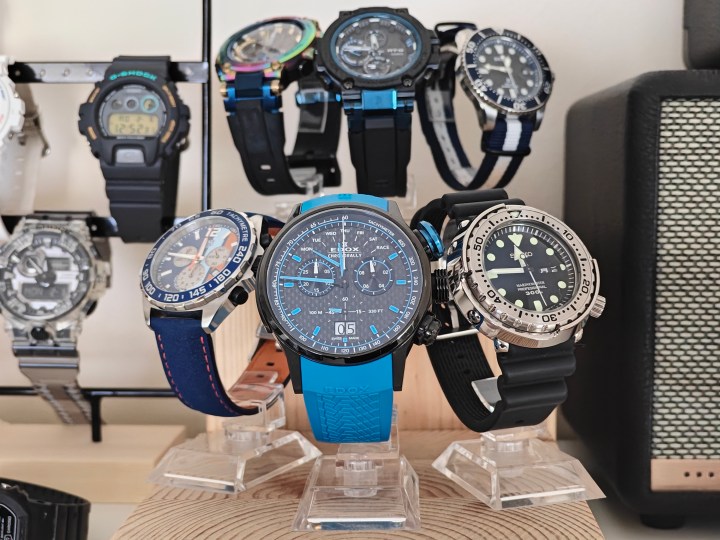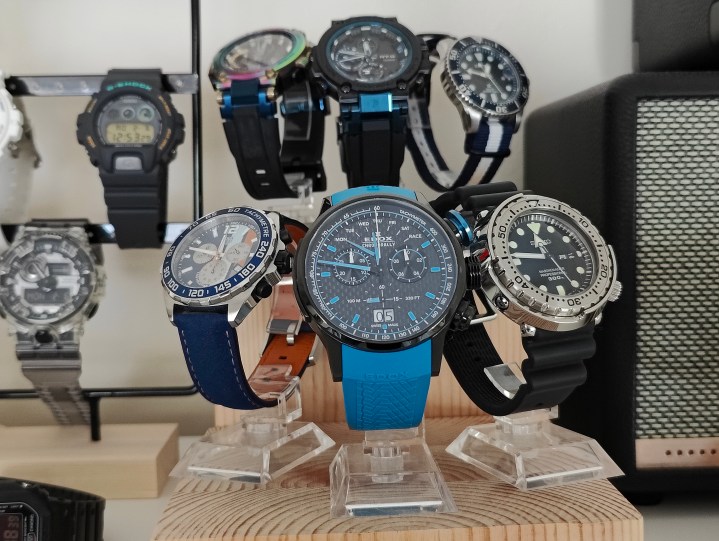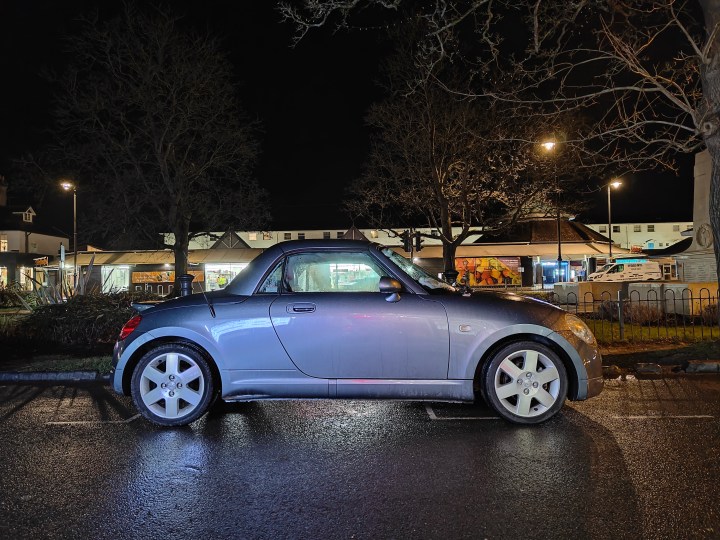Wondering if the OnePlus 11 camera beats the OnePlus 10 Pro camera? Us too! So, over a few days and nights, we put the two against each other to see if the latest OnePlus phone improves over its predecessor.
- OnePlus 11 vs. OnePlus 10 Pro: camera specs
- OnePlus 11 vs. OnePlus 10 Pro: main camera
- OnePlus 11 vs. OnePlus 10 Pro: wide-angle camera
- OnePlus 11 vs. OnePlus 10 Pro: zoom modes
- OnePlus 11 vs. OnePlus 10 Pro: portrait mode
- OnePlus 11 vs. OnePlus 10 Pro: night mode
- OnePlus 11 vs. OnePlus 10 Pro: selfie camera
- The OnePlus 11 gives, but also takes away
It’s interesting not only from a basic camera hardware standpoint, but also because we get to see how Hasselblad continues to influence the photos. The two companies have been working together for a while now, and seeing positive changes is really important. Here are the results.
OnePlus 11 vs. OnePlus 10 Pro: camera specs
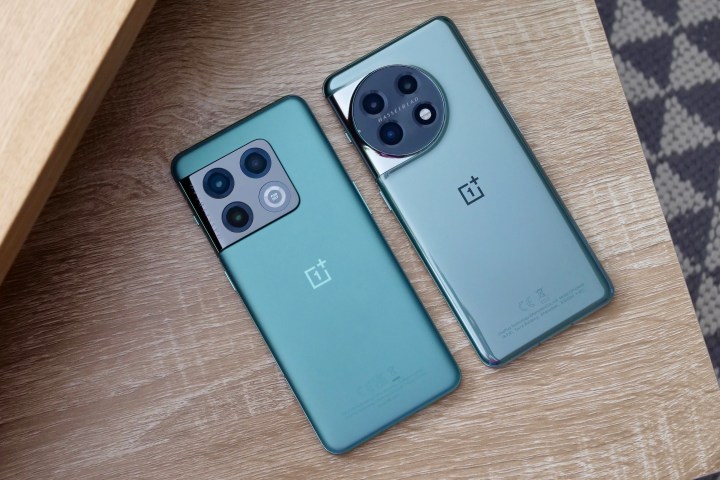
Before the photos, we should talk about the camera hardware. The OnePlus 11’s main camera is a 50-megapixel Sony IMX890 with an f/1.8 aperture and optical image stabilization (OIS) and electronic image stabilization (EIS). The wide-angle camera is a 48MP Sony IMX581 with a 115-degree field of view, plus there’s a 32MP Sony IMX709 Portrait Tele Camera. The selfie camera is a 16MP IMX471 fixed focus camera with EIS. There’s also a 13-channel multispectral sensor that will help the camera produce more realistic colors and improve the white balance.
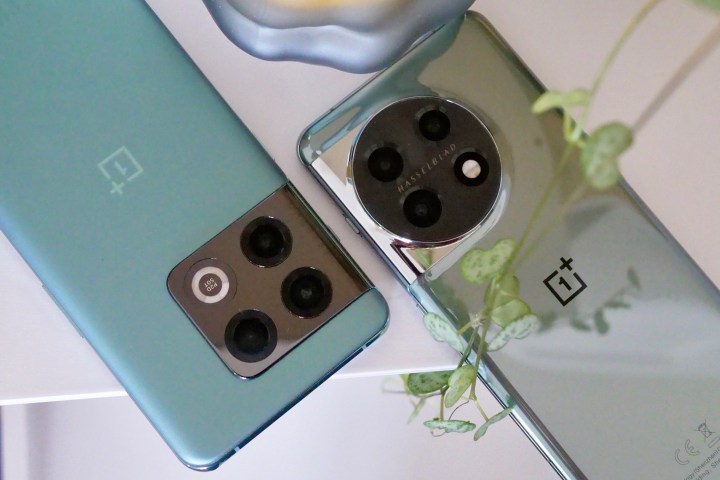
The OnePlus 10 Pro has a 48MP Sony IMX789 main camera with OIS and EIS. It’s joined by a 50MP wide-angle camera with a maximum 150-degree field of view, plus an 8MP telephoto camera with OIS. The front camera is a fixed focus 32MP Sony IMX615 with EIS. Both cameras use Hasselblad’s Camera for Mobile software.
Finally, the other difference that impacts camera ability is the processor. The OnePlus 10 Pro has the Qualcomm Snapdragon 8 Gen 1 chip inside, while the OnePlus 11 has its successor, the Qualcomm Snapdragon 8 Gen 2.
OnePlus 11 vs. OnePlus 10 Pro: main camera
- 1. OnePlus 11
- 2. OnePlus 10 Pro
The first set of photos, as is often the way with these tests, set the tone for much of the comparison. The OnePlus 11’s main camera photos have deeper, more eye-catching colors, more detail, better exposure, and less noise. Take a look at the canvas roof on the Land Rover in the OnePlus 11’s photo and you can spot the creases, texture, and weather coloration that’s almost entirely missing from the OnePlus 10 Pro’s photo.
The improved exposure and white balance show more detail on the underside of the vehicle, on the brick work behind it, and on the knobby tires too. The OnePlus 10 Pro’s sky is more saturated, which may please some people, but both are equally noisy in this area when you look closely. However, zoom in on the brown bin in the right of the photo, and the OnePlus 10 Pro is considerably noisier than the OnePlus 11.
- 1. OnePlus 11
- 2. OnePlus 10 Pro
This trend continues in the second image, which is actually a color photo despite appearances. The wonderful sharpness of the stark metalwork in the OnePlus 11’s photo is immediately obvious, as is the more accurate white balance. There’s a lot of noise in the OnePlus 10 Pro’s photo, which is almost entirely missing in the OnePlus 11’s image, and luckily not at the expense of introducing a lot of obvious artificial smoothing.
- 1. OnePlus 11
- 2. OnePlus 10 Pro
I mentioned in my OnePlus 11 review that the camera can take photos with character, and the photo above shows what I mean. There’s a warmth to the scene that the OnePlus 10 Pro can’t quite replicate by default, and this may be down to Hasselblad’s tuning. The ice on the surface of the pond is more obvious, and I think the focus is more accurate, resulting in a sharper image.
- 1. OnePlus 11
- 2. OnePlus 10 Pro
The last photo is a frozen bird bath. The OnePlus 11 isn’t great at taking photos up-close, but this one came out better than most others, again showing a warmer, more attractive tone than the OnePlus 10 Pro. The finer detail and improved white balance brings out a lot more texture and weathering, but again, I think a lot of the success may come from Hasselblad’s work on colors. These all show the
Winner: OnePlus 11
OnePlus 11 vs. OnePlus 10 Pro: wide-angle camera
- 1. OnePlus 11
- 2. OnePlus 10 Pro
The differences, and superiority of one camera over the other, is less clear-cut when we come to the wide-angle camera. Some of the facts remain true — the OnePlus 11 shows more detail and takes sharper photos — but the colors and tone can shift in favor of the OnePlus 10 Pro.
The countryside scene here, a wide-angle version of the image used in the main camera test, shows what I mean. The frigid, frozen water is emphasized by the cooler tone in the OnePlus 10 Pro’s photo, and is overly green in the OnePlus 11’s photo. The OnePlus 11’s focus is better, as are some of the background colors, but there’s noise in the sky and less detail in the shadows compared to the OnePlus 10 Pro’s photo.
- 1. OnePlus 11
- 2. OnePlus 10 Pro
Our second photo shows a similar situation, with the water a striking green color in the OnePlus 11’s photo, compared to a lighter color in the OnePlus 10 Pro’s The thing is, neither are realistic, as in real life, it was somewhere in-between. The OnePlus 11’s colors elsewhere are more saturated than the OnePlus 10 Pro, but there’s less edge distortion and noise.
Neither camera takes a great wide-angle photo, and while the OnePlus 10 Pro does have a special 150-degree wide-angle mode the OnePlus 11 lacks, the new phone has a greater technical ability when it comes to edge distortion and noise reduction. It’s hard to say one is better than the other, so this is going to be a draw.
Winner: Draw
OnePlus 11 vs. OnePlus 10 Pro: zoom modes
- 1. OnePlus 11 3.3x
- 2. OnePlus 10 Pro 3.3x
The OnePlus 10 Pro can zoom in up to 3.3x using its telephoto camera, while the OnePlus 11 can only manage 2x. The first photo shows how poorly the
This is reversed when you switch to the 2x optical zoom on the OnePlus 11, and digitally emulate it on the OnePlus 10 Pro. There’s more noise, less clarity, and washed-out colors. The OnePlus 11’s photo is hardly a winner though, with poor focus and minimal detail.
- 1. OnePlus 11 2x
- 2. OnePlus 10 Pro 2x
The greater 3.3x optical zoom level provided by the OnePlus 10 Pro is not only more versatile, but it’s also better quality than the OnePlus 11’s 2x optical feature. Neither phone has a decent digital zoom, which makes a strong optical telephoto camera even more of a desirable feature.
Winner: OnePlus 10 Pro
OnePlus 11 vs. OnePlus 10 Pro: portrait mode
- 1. OnePlus 11
- 2. OnePlus 10 Pro
The OnePlus 11 sacrificed a telephoto camera for a dedicated portrait camera, complete with Hasselblad’s tuning to provide a better, more DSLR-like depth of field. There’s a marked difference between the blur, with the
Edge recognition isn’t dramatically different, though. It’s better on the OnePlus 11, but in most situations, you really have to look closely to see where it improves over the OnePlus 10 Pro. The
- 1. OnePlus 11
- 2. OnePlus 10 Pro
The brighter colors and deeper blacks produced by the OnePlus 11 give its portrait mode photos a character that’smissing from the colder OnePlus 10 Pro, but the level of detail isn’t that different. The
Winner: OnePlus 11
OnePlus 11 vs. OnePlus 10 Pro: night mode
- 1. OnePlus 11
- 2. OnePlus 10 Pro
There’s no question the OnePlus 11’s lowlight photos have more detail than the OnePlus 10 Pro’s photos, but there is a chance the older phone displays more accurate and pleasing tones and colors. Take a look at the car here, which was bright purple, which is better reflected in the OnePlus 10 Pro’s photo than the OnePlus 11’s. However, when you examine text on signs in the background, it’s readable in the OnePlus 11’s photo, but less so in the OnePlus 10 Pro’s.
In the second photo, the OnePlus 11’s sky takes on an odd green shade, and while the grass is brighter and arguably more realistic, the overall tone of the photo doesn’t have the true nighttime atmosphere of the OnePlus 10 Pro’s photo.
- 1. OnePlus 11
- 2. OnePlus 10 Pro
Finally, you can see how much better the OnePlus 10 Pro’s white balance is in lowlight, with crisp blacks and sharp whites on the sign, which are washed out in the OnePlus 11’s photo. The OnePlus 11’s exposure brightens the background and surrounding area considerably, but not really to the benefit of the photo.
- 1. OnePlus 11
- 2. OnePlus 10 Pro
There is a lot more detail in the OnePlus 11’s lowlight photos, which is a clear benefit. However, this is squandered when the colors and tone don’t best represent the scene. Good lowlight photos are generated by more than just adding brightness. It’s a hard one to call, as both have advantages and disadvantages, but neither come out ahead of the other.
Winner: Draw
OnePlus 11 vs. OnePlus 10 Pro: selfie camera
- 1. OnePlus 11
- 2. OnePlus 10 Pro
The OnePlus 11 has half the available megapixels for its selfie camera, and it shows in the end results. The OnePlus 10 Pro’s 32MP selfie camera has more detail, better color reproduction, and more definition. Once again though, the
Using the portrait mode on the front camera, the OnePlus 11 adds a more dramatic depth of field, which does look less realistic compared to the OnePlus 10 Pro’s more subtle treatment. I’ll take subtleness and more detail every time, and if I want more saturation, it can be added with an editor afterwards. The OnePlus 10 Pro gets the win here.
Winner: OnePlus 10 Pro
The OnePlus 11 gives, but also takes away
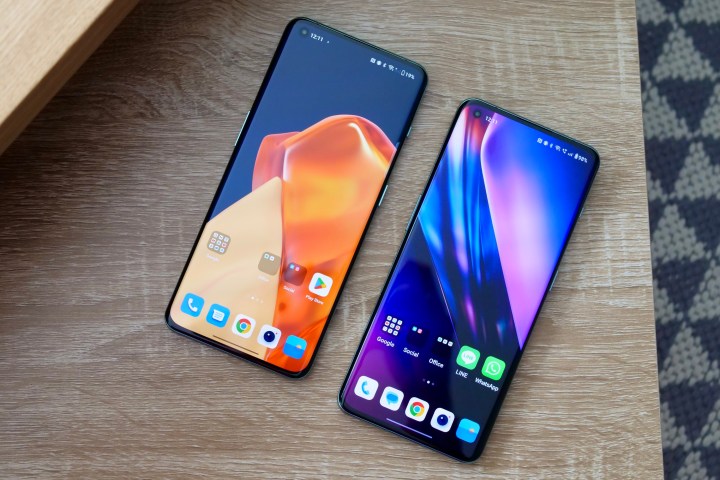
The OnePlus 11 wins the main camera and the portrait mode sections, while the OnePlus 10 Pro wins the selfie camera and the zoom mode tests. Both had advantages and disadvantages when it came to wide-angle photos and night mode shots, and one was not really better than the other in either category. That means the
What does this mean to you, if you’re thinking about an upgrade? The OnePlus 11’s main camera takes better photos than the OnePlus 10 Pro’s, and I really like the character that comes through. If you use this camera the most, there’s enough of a reason to upgrade. However, outside of that, it’s harder to make a case to upgrade, as the OnePlus 11’s benefits come in some of the often less-used features.
If you’re considering the OnePlus 11 as your new phone, then it’s good to see that the partnership with Hasselblad is beginning to give its camera an individuality that has been missing until now — and you certainly won’t be getting a poor camera experience. It’s also a seriously good smartphone when you don’t only consider the camera, but the total package — the
Editors' Recommendations
- The OnePlus 12R is still one of 2024’s best smartphone deals
- I did a OnePlus 12 vs. OnePlus 12R camera test, and there’s a big difference
- OnePlus just fixed a big issue with the OnePlus Watch 2
- Don’t buy the OnePlus 12 — 6 reasons to wait for the OnePlus 13
- OnePlus told us the secrets behind its one-of-a-kind smartwatch















